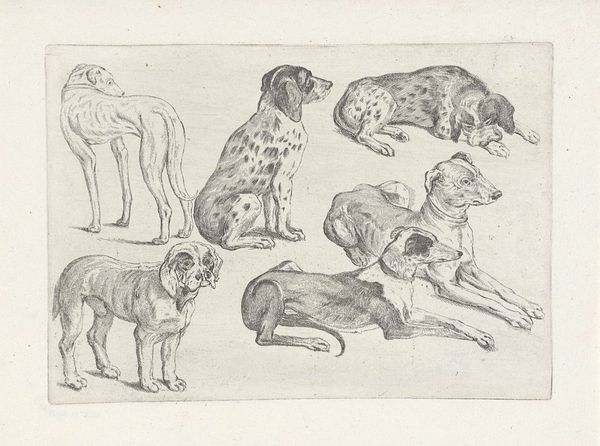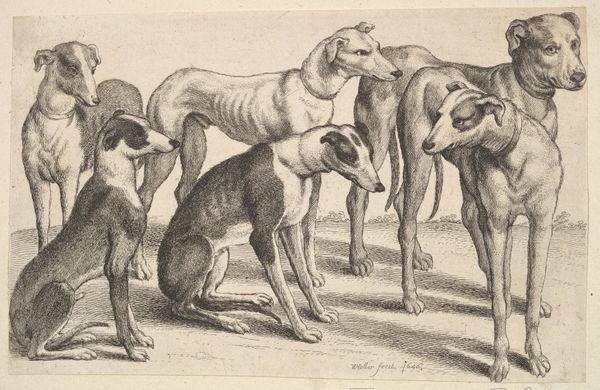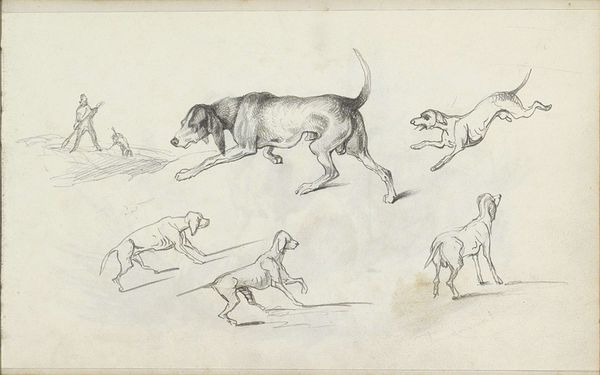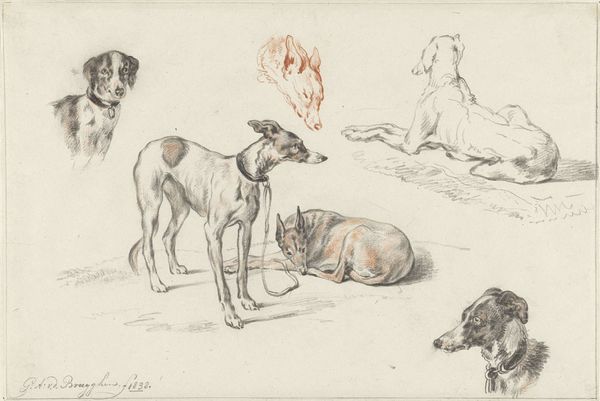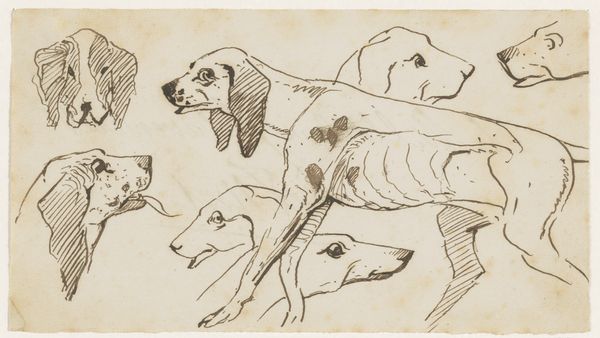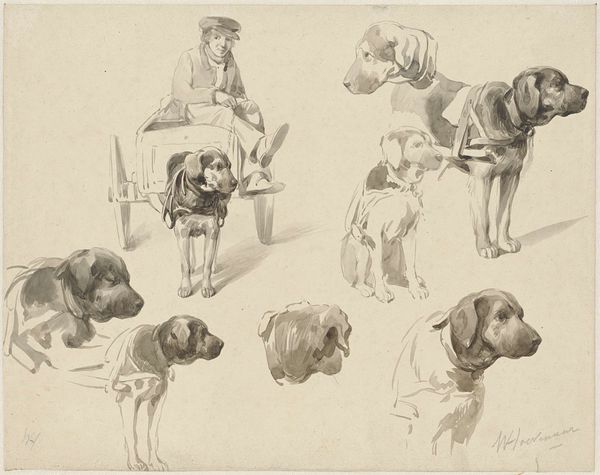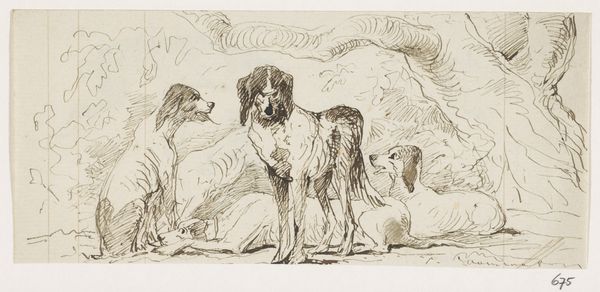
drawing, print, etching, paper, pen
#
portrait
#
drawing
#
light pencil work
#
quirky sketch
#
baroque
# print
#
pen sketch
#
etching
#
pencil sketch
#
figuration
#
paper
#
personal sketchbook
#
idea generation sketch
#
sketchwork
#
pen-ink sketch
#
line
#
sketchbook drawing
#
pen
#
sketchbook art
#
realism
Dimensions: height 140 mm, width 210 mm
Copyright: Rijks Museum: Open Domain
Curator: Welcome. Here we have "Studies van jachthonden" – "Studies of Hunting Dogs" – created by Wenceslaus Hollar around 1646-1647. This etching, showcasing several dogs, is currently housed in the Rijksmuseum. Editor: My initial response is to the elegant economy of line here. The spareness of the depiction makes it striking. The forms of the dogs seem effortlessly rendered. Curator: Absolutely. Hollar, as a prolific printmaker, was deeply embedded in the reproduction economy of his time. These kinds of studies served a practical function; prints disseminated images, providing models and inspiration for other artists and artisans. Consider, also, that dogs like these were commodities, bred and trained for the hunt, a privileged pursuit. Editor: Yes, but looking closer, there is more than just the representation. Note how Hollar captures each canine posture so accurately with such varied use of lines to indicate both volume and texture. The contrasts evoke different textures. See how with only ink on paper, he has described glossy, smooth coats as well as coarse fur? Curator: That keen observation points to a deeper reality of artistic labor in the 17th century. Hollar, like many printmakers, was dependent on patronage and market forces. His skill in rendering animals like these, so beloved by the aristocracy, would secure commissions and ensure the circulation of his work. These images weren't merely aesthetic; they had a clear economic function. Editor: But wouldn't you also concede there's a palpable liveliness communicated formally? Observe the variations between line weights—describing muscles versus contours in subtle but very clear distinctions! It allows light and space to shape how we visually perceive the whole composition. There's artistry in how they're organized on the page. Curator: Certainly. The formal arrangement serves a practical purpose for Hollar: presenting potential patrons or fellow artists with different aspects of the subject animal, as it relates to their shared economic endeavors. Even so, I can acknowledge an engagement and investment that we read as ‘artistry’ now. Editor: So, considering how the study juxtaposes form with function and skill with necessity. Curator: ...Perhaps what seems ‘effortless’ to us resulted from material and economic considerations, now crystallized into artistry.
Comments
No comments
Be the first to comment and join the conversation on the ultimate creative platform.
